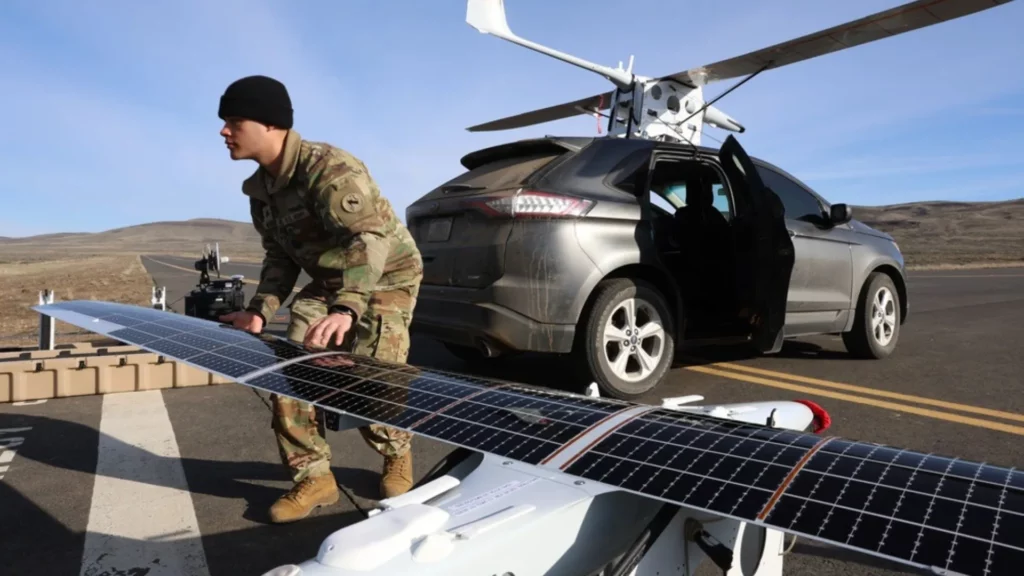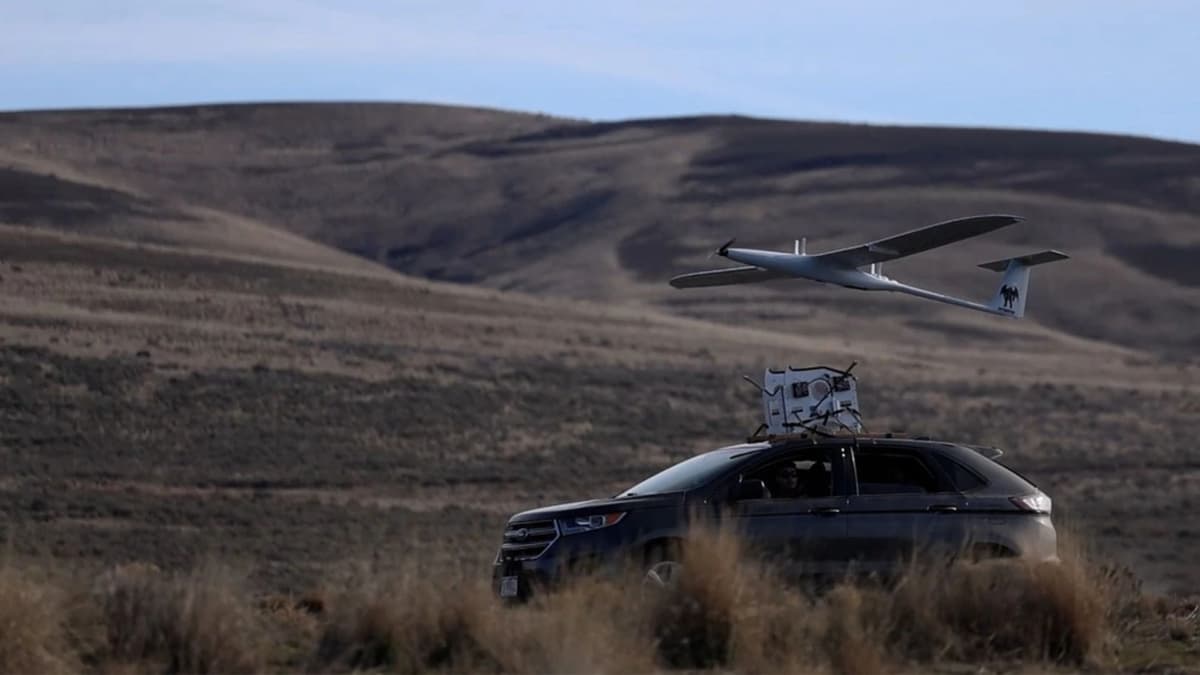Con la finalidad de incrementar sus capacidades de Inteligencia, Vigilancia y Reconocimiento (ISR), el US Army comenzó a emplear el UAS K1000 “Ultra Long Endurance Autonomous Airccraft”. Desarrollado por Kraus Hamdami Aerospace, este UAS propulsado por energía solar y capaz de operar con un alcance de hasta 1000 millas (1600 km), techo de servicio 7.000m y una velocidad de 74 km/h, integrará y complementará las capacidades de la red ISR orgánica de esa fuerza, que incluye además los High Altitude Balloons (HAB).
To improve its intelligence, surveillance, and reconnaissance (ISR) capabilities, the US Army has introduced the K1000 Ultra-Long Endurance Unmanned Aircraft System (UAS).
Developed by California-based Kraus Hamdani Aerospace, this solar-powered drone is now operational with the Army’s 1st Multi-Effects Battalion (MDEB) under the 1st Multi-Domain Task Force (MDTF).
Solar drone for surveillance
According to a press release by the US Army, the highlight of the training was the network extension integration and deep sensing capability of High-Altitude Balloons (HABs) and the experimentation with K1000 ultra-long-endurance, solar-powered UAS.
“This is our first real exercise integrating government owned and operated ultra long-endurance UAS specifically designed for long-range deep sensing,” said Lt. Col. Joseph Mroszczyk, commander of 1 MDEB.
Before the exercise, the unit spent two years working with Kraus Hamdani Aerospace to test and train on the long-endurance UAS system.
This was the first time the soldiers could operate the system independently.
“We’ve got trained pilots and mechanics gaining valuable experience on the platform now,” Lt. Col. Mroszczyk added.

“They’re logging hours and providing crucial sensor data, enabling us to serve as the task force’s eyes and ears, and as key contributing Army sensor to the Joint Force.”
During Static Focus 3, 1 MDEB completed over one hundred hours of UAS flights in different setups.
“From a maintenance perspective, I was astonished by how little time and resources the platform demanded,” said Sgt. Jake Meyer from the UAS platoon from 1 MDEB’s Extended Range and Sensing Effects (ERSE) Company.
“Compared to traditional platforms, which require several months to get familiarized with, we were up and running in just two days.”
1,000-mile drone
The US Army included max endurance testing in the platform experiments for flights with multiple ships.
“Multi-ship flight operations are the most complex missions, but the autonomous capability allows me, as an operator, to focus on the mission instead of my continuous direct management of each aircraft,” said Staff Sgt. Jacob Wilbert from the UAS platoon of 1 MDEB’s ERSE Company.
Complementary to the long-range deep sensing UAS, the unit also experimented with HABs from three vendors sponsored by the Army ISR Task Force for inclusion in the event.
The K1000 is three meters (9.8 feet) long and has a wingspan of five meters (16.4 feet). It uses lithium-ion batteries for power and has a folding propeller.


